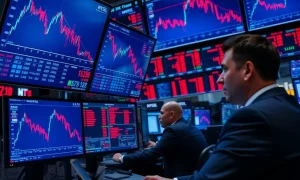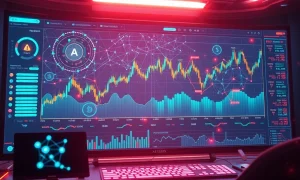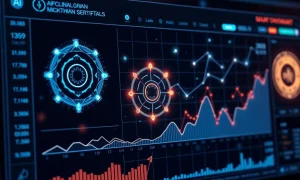Goldman Sachs has issued a stark warning about emerging labor weakness that could reshape the economic landscape in coming months. The investment banking giant’s latest analysis reveals troubling signs across multiple employment indicators.
Understanding the Labor Weakness Indicators
Recent data shows concerning patterns in hiring activity. Companies report slowing recruitment efforts across sectors. Additionally, job posting volumes have declined significantly. This labor weakness appears widespread rather than isolated.
Key Factors Driving Employment Concerns
Several economic pressures contribute to this labor weakness. Inflation continues affecting business operations. Interest rate changes impact hiring budgets. Global economic uncertainty creates caution among employers.
Sector-Specific Impact Analysis
The technology sector shows particular vulnerability to labor weakness. Hiring freezes have become increasingly common. Retail and hospitality face similar challenges. Manufacturing employment growth has stalled noticeably.
Historical Context and Projections
Current labor weakness patterns resemble pre-recession periods. Previous economic cycles show similar employment slowdowns. Goldman Sachs analysts project continued deterioration. Recovery timelines remain uncertain based on current data.
Policy Implications and Responses
Government agencies monitor these labor weakness signals closely. Potential policy adjustments may address employment concerns. Federal Reserve decisions could influence hiring trends. Stimulus measures might become necessary if conditions worsen.
Investor Considerations and Market Impact
Labor weakness affects corporate earnings projections. Stock market volatility may increase accordingly. Bond markets show changing risk assessments. Commodity prices often correlate with employment trends.
Regional Variations in Employment Data
Certain regions experience more pronounced labor weakness. Coastal economic hubs show earlier signs of slowdown. Midwest manufacturing centers face particular challenges. Southern states maintain relatively stronger employment numbers.
Long-Term Economic Implications
Sustained labor weakness could affect consumer spending patterns. Housing market dynamics may shift accordingly. Business investment decisions face increased scrutiny. Economic growth projections require downward revisions.
Frequently Asked Questions
What specific indicators show labor weakness?
Jobless claims, hiring rates, and wage growth data all indicate emerging weakness in labor markets.
How does Goldman Sachs track employment trends?
The firm uses proprietary data analysis combining government statistics with corporate hiring patterns.
Which industries face the greatest risk?
Technology, retail, and manufacturing sectors show the most significant vulnerability currently.
Could this lead to widespread layoffs?
While possible, current data suggests hiring freezes and reduced hours may precede major layoffs.
How long might this labor weakness last?
Projections indicate several quarters of challenges based on economic modeling and historical patterns.
What should job seekers consider currently?
Diversifying skills and exploring multiple industries provides better employment security during market weakness.
























